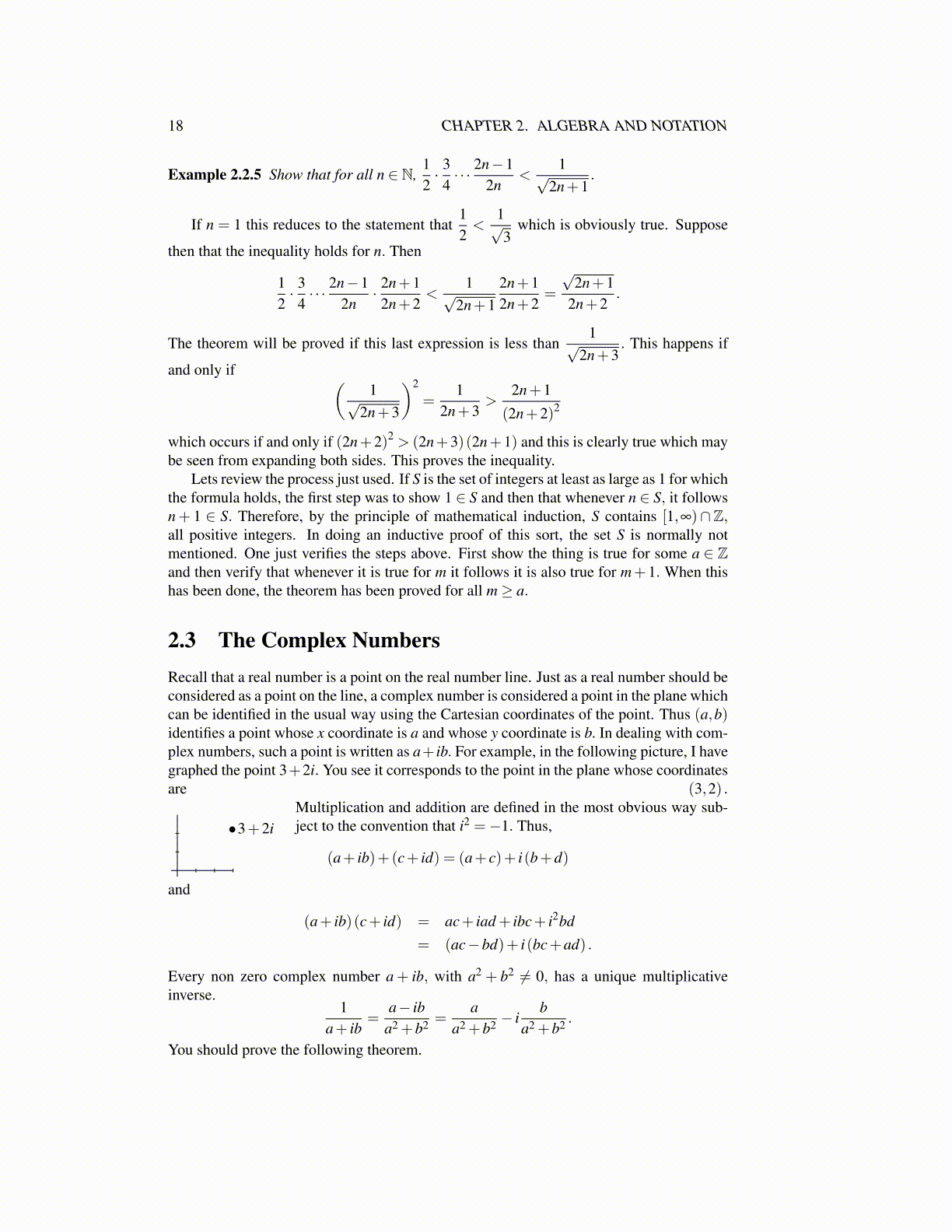
18 CHAPTER 2. ALGEBRA AND NOTATION
Example 2.2.5 Show that for all n ∈ N,12· 3
4· · · 2n−1
2n<
1√2n+1
.
If n = 1 this reduces to the statement that12<
1√3
which is obviously true. Suppose
then that the inequality holds for n. Then
12· 3
4· · · 2n−1
2n· 2n+1
2n+2<
1√2n+1
2n+12n+2
=
√2n+1
2n+2.
The theorem will be proved if this last expression is less than1√
2n+3. This happens if
and only if (1√
2n+3
)2
=1
2n+3>
2n+1
(2n+2)2
which occurs if and only if (2n+2)2 > (2n+3)(2n+1) and this is clearly true which maybe seen from expanding both sides. This proves the inequality.
Lets review the process just used. If S is the set of integers at least as large as 1 for whichthe formula holds, the first step was to show 1 ∈ S and then that whenever n ∈ S, it followsn+ 1 ∈ S. Therefore, by the principle of mathematical induction, S contains [1,∞)∩Z,all positive integers. In doing an inductive proof of this sort, the set S is normally notmentioned. One just verifies the steps above. First show the thing is true for some a ∈ Zand then verify that whenever it is true for m it follows it is also true for m+1. When thishas been done, the theorem has been proved for all m≥ a.
2.3 The Complex NumbersRecall that a real number is a point on the real number line. Just as a real number should beconsidered as a point on the line, a complex number is considered a point in the plane whichcan be identified in the usual way using the Cartesian coordinates of the point. Thus (a,b)identifies a point whose x coordinate is a and whose y coordinate is b. In dealing with com-plex numbers, such a point is written as a+ ib. For example, in the following picture, I havegraphed the point 3+2i. You see it corresponds to the point in the plane whose coordinatesare (3,2) .
•3+2iMultiplication and addition are defined in the most obvious way sub-ject to the convention that i2 =−1. Thus,
(a+ ib)+(c+ id) = (a+ c)+ i(b+d)
and
(a+ ib)(c+ id) = ac+ iad + ibc+ i2bd
= (ac−bd)+ i(bc+ad) .
Every non zero complex number a + ib, with a2 + b2 ̸= 0, has a unique multiplicativeinverse.
1a+ ib
=a− ib
a2 +b2 =a
a2 +b2 − ib
a2 +b2 .
You should prove the following theorem.